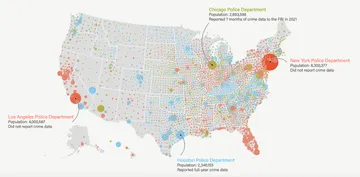After decades of debate, New York this week raised the age at which juveniles are automatically tried as adults, from 16 to 18. It was one of the last states in the country to make the shift — and it was hailed as a triumph.
“This is one of the strongest raise the age bills passed to date,” said Marcy Mistrett, C.E.O. of the Campaign for Youth Justice, a national advocacy group that fought for the change in New York and is still working on a similar bill in North Carolina, now the only remaining state where 16-year-olds are automatically tried in the adult system.
But there is some fine print. The law still pushes thousands of juveniles accused of felonies directly into adult court, drawing criticism from some lawmakers who think it did not go far enough.
The law is “half a loaf,” state Sen. Kevin Parker of Brooklyn said on the floor of the state Senate on Sunday. Exceptions and loopholes give it a “kinda-wanna-sorta” feel, he said, “like we gotta do it but we really, really don't want to do it.”
For instance, all 16- or 17-year-olds who are accused of a violent felony will still be tried in adult criminal court, though in a quasi-separate section called the “youth part.” Last year, 3,445 juveniles fell into that category, according to the New York State Division of Criminal Justice Services. Even under the new system, these young people will continue to face adult consequences such as lengthy prison sentences and lifetime criminal records.
Of that group, anyone accused of a sex offense or any offense in which significant bodily harm was done or a deadly weapon displayed — which is likely the majority of cases — will be tried as adults without the chance to move to family court, said juvenile defenders experienced in these cases. Even 16- and 17-year-olds who commit nonviolent felonies will begin their cases in adult court, although they will be moved to family court unless a prosecutor can demonstrate “extraordinary circumstances,” which the legislation does not define.
Meanwhile, under a little-known 1978 law passed during a juvenile crime spree that made tabloid headlines, even 14- and 15-year-olds are tried as adults in New York if they are accused of one of more than a dozen specific felonies, from murder to burglary to possession of a weapon on school grounds. Thirteen-year-olds accused of murder can also be tried in the adult system under the same rules.
In New York City alone, 1,137 children ages 13 to 15 were arrested for these offenses in 2015, according to the New York City Criminal Justice Agency, a nonprofit organization that collects criminal justice data from the courts. These children will continue to be presumed adults by the state’s criminal justice system.
But most youth advocates still enthusiastically support the new law, in large part because it will divert all of the more than 17,000 youth aged 16 to 17 accused of misdemeanors each year to family court.
One of the law’s most sweeping changes will be to remove everyone below age 18 from county jails. The high-profile story of Kalief Browder, who at 16 years old faced years of violence and solitary confinement on New York City’s Rikers Island for allegedly stealing a backpack, would no longer be possible. Charges were eventually dropped against Browder and he was released, but he committed suicide in 2015.
“The law is not perfect,” said Stephanie Gendell, associate executive director of the Citizens’ Committee for Children of New York, an advocacy group. But it will protect “the majority of 16- and 17-year-olds in New York.”
Many states initially send juveniles to the juvenile court system, while allowing prosecutors or judges to transfer what they deem severe cases into adult court. Mistrett, the C.E.O. of Campaign for Youth Justice, said that those exceptions, like some of the gaps in New York’s new law, allow states discretion to ignore their own age restrictions.
Of course, for proponents of raising the age, the goal has always been to keep all juveniles, accused of all crimes, out of the adult system, and to that extent New York’s law is a compromise stitched together in Albany after many years of contentious debate and Republican opposition. Most believe the battle to keep 16- and 17-year-olds accused of violent felonies from ever being tried as adults will still be fought for many years to come.
